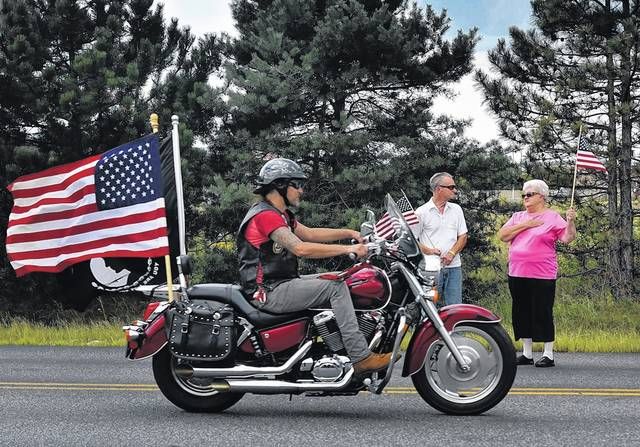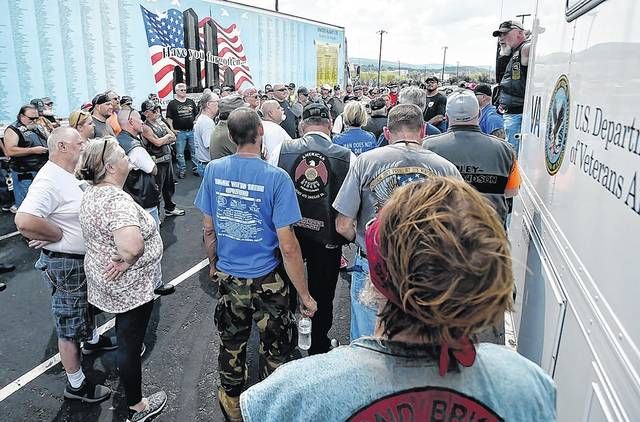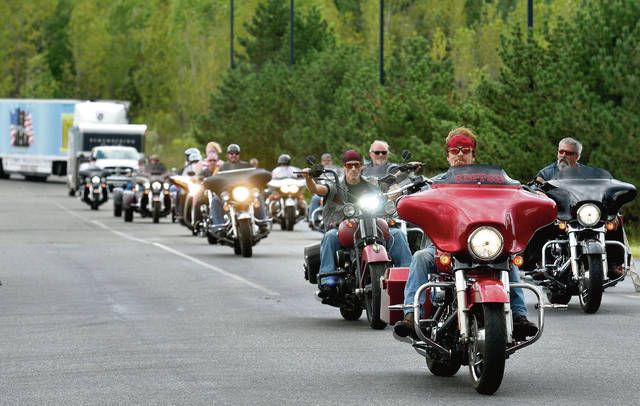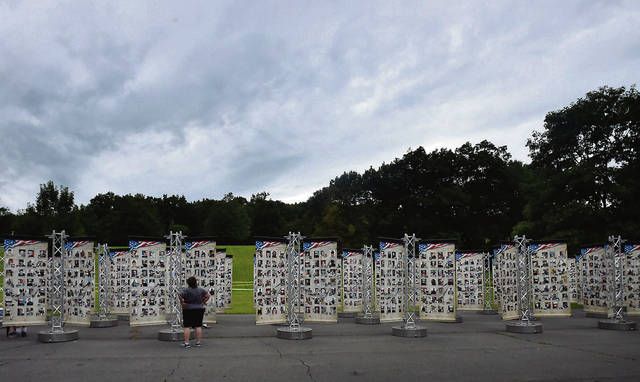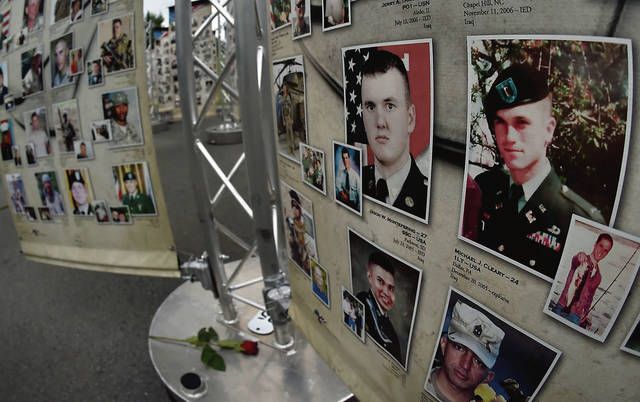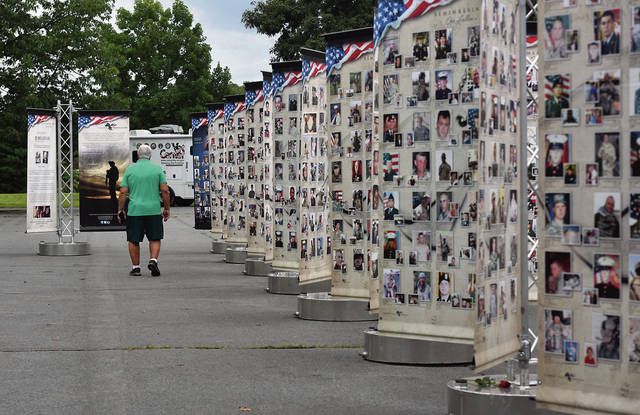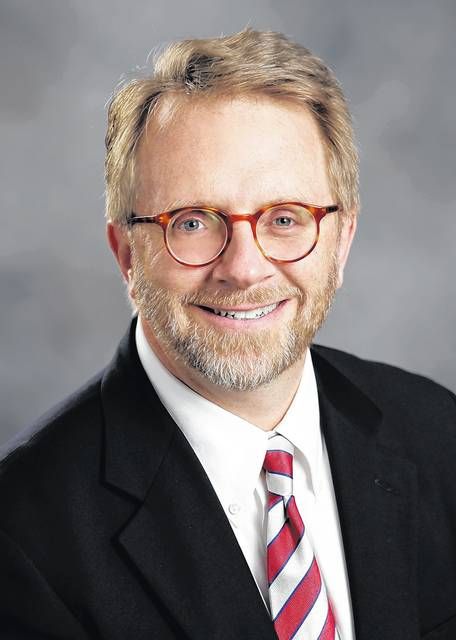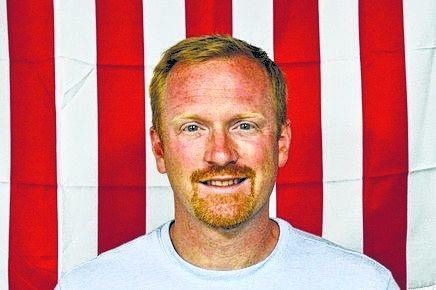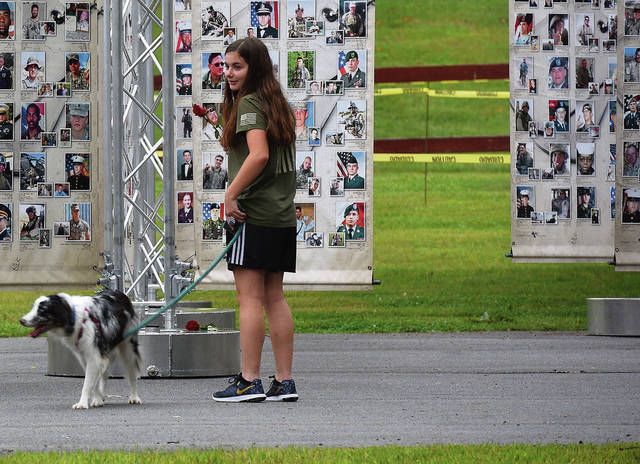Click here to subscribe today or Login.
Avianna Pugliese is like many American teenagers.
She balances a full schedule of activities. She loves to play soccer.
And at 15, Pugliese has no memory of the day terrorists hijacked four airliners and attacked our country 17 years ago this week.
Sadly, she also has no real memory of her father, Army Sergeant First Class George Pugliese, who died fighting for America four years later in Iraq.
“From what my family has told me, he felt strongly about serving,” the Lackawanna County teen said. “He went to war so my brothers and I wouldn’t have to.”
As the anniversary of Sept. 11, 2001, neared, Pugliese, of Carbondale, spent Friday at McDade Park in Scranton visiting a traveling memorial to the men and women who have given their lives for America since 9/11, including her dad.
“It was a little bit overwhelming seeing his name there,” Pugliese said.
For many her age, however — especially those without a personal connection to the attacks or someone in the military — 9/11 is something distant, a subject they learn about in their history books.
That creates some interesting challenges for educators — both as professionals, and as adults who remember the pain and searing emotions of that terrible day when nearly 3,000 people were slain by radical Islamic terrorists.
“To a seventh-grader, this really is ancient history,” said Harry Haas, a Dallas Middle School history teacher.
Haas was teaching in Northern Virginia that day, in sight of the smoke rising from a hijacked airliner that slammed into the Pentagon.
His students were spared direct losses, though one youth’s mother worked in the building and was not there when the plane hit, because her son — thankfully — caused her to be late that day, Haas explained.
Fast-forward to Dallas in 2018. Haas’ current crop of incoming students are 12 and 13, meaning they were born four or five years after the attacks.
That means the day’s events are hazy for the majority of them — and some aren’t even sure exactly where the four hijacked planes crashed.
“Most kids know about the attacks on New York,” he said. “Fewer know about the Pentagon. Many don’t know there was a fourth plane that crashed here in Pennsylvania.”
In addition to the two passenger jets that struck the two World Trade Center towers in New York and the Pentagon outside Washington, D.C., a fourth plane, United Airlines Flight 93, went down in a Somerset County field about 60 miles from Pittsburgh. It was the only one of the four that did not reach its intended target — reported to have been the U.S. Capitol — apparently after passengers struggled to regain control of the aircraft.
“When I show students the map, they see that it was a coordinated attack on our country and they really start to understand,” said Haas, who also serves as a Luzerne County Council member.
Thanks to the passage of time, even first-year college students have next to no memory of 9/11.
‘Not immune’
For Misericordia University history professor Brian Carso, an attorney by training and an expert in constitutional law, he can clearly see the cultural imprint of 9/11 on his students.
He sees a generation of young people who have always lived with a certain amount of fear about new terrorist attacks — and who he fears may be complacent about maintaining an appropriate balance between safety and individual rights.
“Not having known any different, you find yourself more willing to sacrifice some civil liberties in the name of national security,” Carso said. “I worry about that.”
What isn’t lacking, Carso said, is a real desire among young people to learn about the attacks, and to discuss their continuing impact.
“In history classes, the students want to talk about it still,” he said. “They know how much it means to people, especially those who experienced it.”
“Their families certainly talk about it,” Carso said. “They’re not immune to the emotion.”
Carso remembers wiping back tears the first time he visited the 9/11 memorial in Lower Manhattan. He contrasts that with visiting the site with a group of visiting youths from the West Coast.
“It was interesting to watch how they reacted to it,” Carso said. “It’s more of a historical event for people who don’t remember it.”
With that in mind, how do educators teach 9/11?
As Carso explained, it comes up both in history and constitutional law classes at Misericordia — and is a key curriculum topic for the university’s Government, Law and National Security program, which he said was launched in 2008.
“The fact that national security is such a central part of that is a direct result of 9/11,” he said.
At Dallas, Haas said the subject is integrated into the social studies curriculum, and is discussed as part of world history and current events.
As part of classwork this week, his students will watch videos and discuss the events of 9/11, but they’ll also have some homework. Haas will ask them to interview friends and family members about their memories of 9/11.
“We’re in Northeastern Pennsylvania, we’re not far from New York,” Haas said. “Invariably, each year we’ll have someone who has a relative who was in the city that day, or was supposed to be in the (World Trade Center) towers but was late for some reason.”
He’ll encourage students to record the interviews with whatever medium they choose — writing, audio recordings, videos — to preserve a record of their findings.
“They really will be documenting history,” he said. “This turns them into historians.”
‘Hard to watch’
For some, that history is of course already very real.
Pugliese’s father was killed on Sept. 28, 2005.
SFC Pugliese, 39, and four other soldiers were were ambushed by insurgents while protecting a civilian work crew that was constructing a bridge near Ramadi, in central Iraq.
A corrections officer at SCI Waymart, SFC Pugliese was an honorably discharged Army veteran who continued to serve his country in the Pennsylvania Army National Guard.
For his daughter, 9/11 brings many emotions. It wasn’t the day her father died, but she knows how much it affected him, and so many others.
She knows this week will bring discussions in class, and videos of that blue September morning when the skies were pierced with fire and tragedy.
“I don’t like looking at them,” she said. “They’re really just so hard to watch.”
